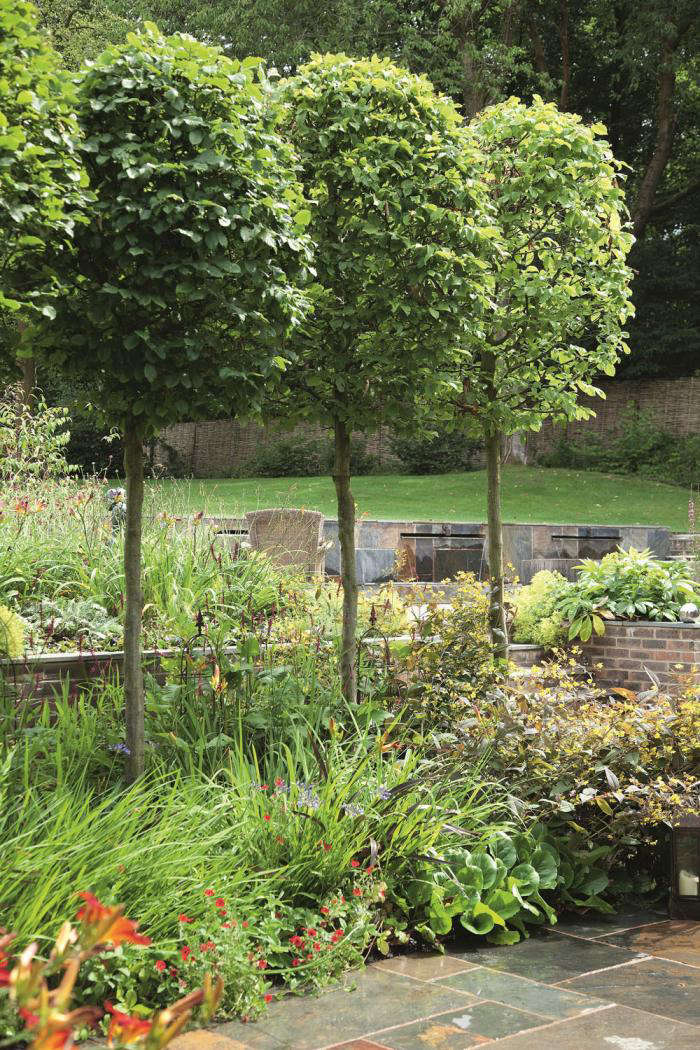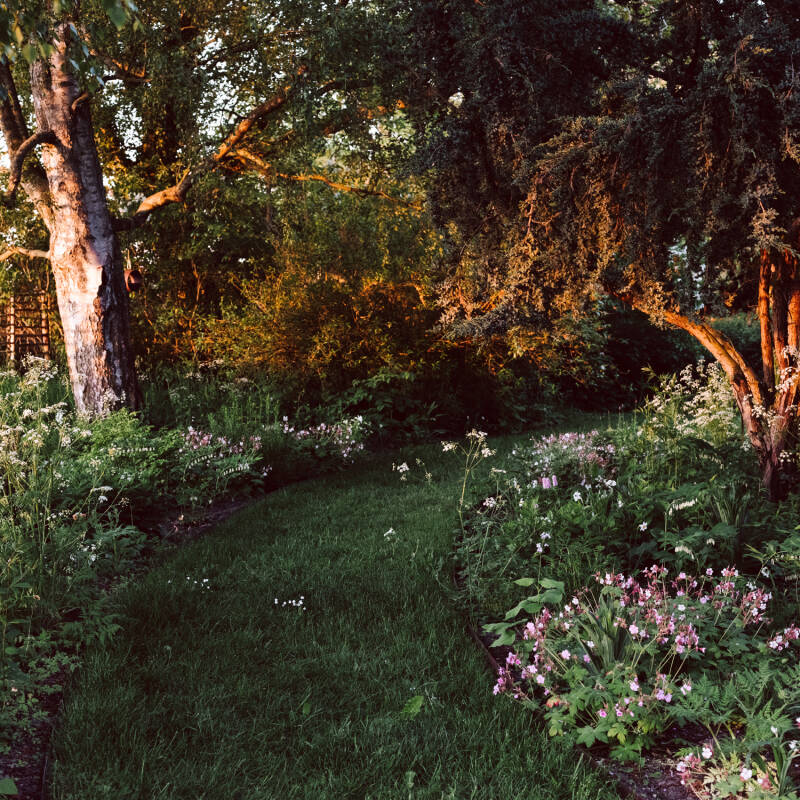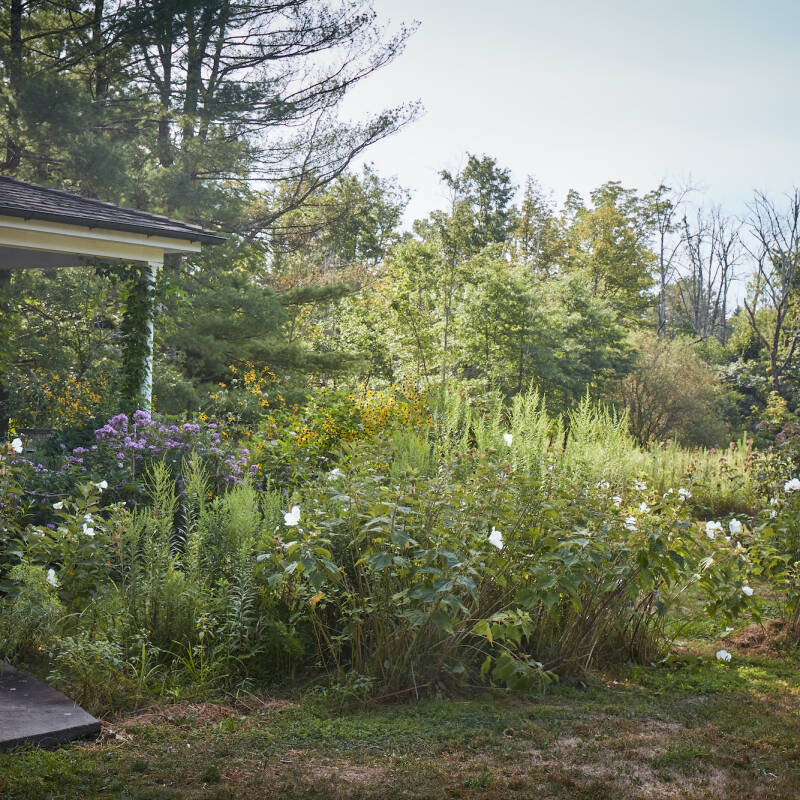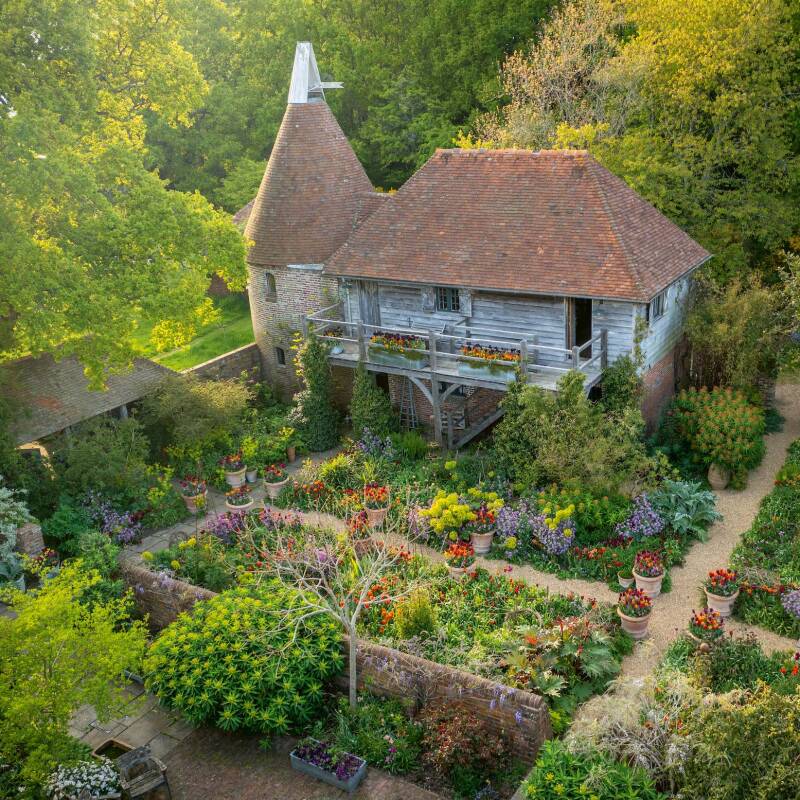Ann-Marie Powell is no stranger to the hard hat. Unlike many people who love flowers, the garden designer and occasional tv presenter loves holding walls and giant slabs as well. This can be the key to a successful small garden. “They rarely happen on their own,” she says. “They are usually carefully planned and designed in order to maximize their potential.”
Plans for Small Gardens is a great hand-holder for people who have the fear: of building and–equally daunting–of horticulture. There are ten projects and each comes with a “What You Will Need” list, usually starting with “skip” and “concrete mixer.” There is a calendar of plant maintenance, should you choose to follow her very persuasive suggestions.
Photographs by Rachel Warne.

Above: The English Country Garden. A pergola planted with an exuberant wisteria creates a shady corridor, separating the sunny terrace from the house. Planting at the base of the pergola is important to soften the area. Used here: persicaria, acanthus, liatris. Shade-loving viola labrodorica is allowed to self-seed in the crevices under the pergola.

Above: Generously proportioned steps can provide impromptu seating by the back door. The materials used link the house to the terrace, which is paved with York stone. “One of the most successful paving designs is a random pattern using rectangular slabs of varying sizes,” says Ms. Powell. Here, occasional slabs have been left out and replaced with smaller sandstone setts. Avoid straight running joints as they always distract the eye, in the wrong way.

Above: The Urban Garden. Uniformity is made a virtue of here, in a shady passage connecting the front and back of a house. Slabs which are set a pace apart (and not half a pace, to madden you) is interplanted with Baby’s Tears (soleirolia soleirolii) which is very easy and enjoys shade.

Above: Massed planting of a single variety (rosemary here) can really work against the hard materials of an urban garden.

Above: A row of topiarized trees. Hornbeam, shown here, is obliging in heavy clay or soil with poor drainage. Ann-Marie is all for planting mature specimens, if possible. “Topiary pieces are classically elegant, lending the garden weight and an upper storey,” she says. The eye is drawn upwards, “making the garden seem bigger than it really is.”

Above: Topiarized trees are a friendlier way of screening off the neighbors, as is hazel wattling. Here, hazel has been woven around upright poles of chestnut, which have been cemented into the garden for extra strength. Made from coppiced wood in the UK, these kingds of screens are a better ecological choice than chemically treated softwood panels.
Above: Ann-Marie Powell’s Plans for Small Gardens is £14.09 from Amazon UK.










Have a Question or Comment About This Post?
Join the conversation